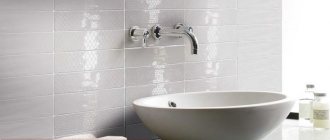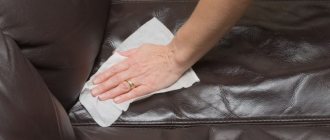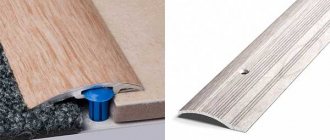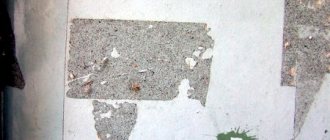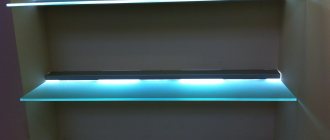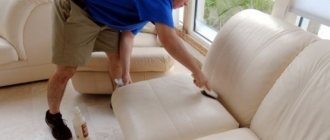Basic Rules
In order for such a floor covering to serve for a long time and not lose its properties, you need to follow simple rules when caring for it:
- remove dirt, food debris and debris immediately;
- wash the floor with detergents more often;
- After cleaning or spilling liquid, wipe dry;
- Glossy tiles cannot be cleaned with powder or a stiff brush.
Advice! The correct selection of cleaning products and methods for cleaning floor tiles is very important. Some harsh chemicals can damage it.
What cleaning products can be used to clean floor tiles?
At the moment, hardware stores offer a wide range of tile cleaning products that can remove not only ordinary dirt, but also grease stains, soap stains, limescale and other deposits. They can also remove very stubborn stains. Before washing floor tiles with these products, you must make sure that they do not contain aggressive acids that can damage the joints between the tiles.
It is also not recommended to mix different cleaning products, especially if they differ in their effects. In this case, you need to be careful when using products containing ammonia or bleach in any proportions.
How to clean floor tiles
If you wash the floor frequently and use detergents for this, the tiles will always be clean. But sometimes hard-to-remove stains appear on it. Do not rub them with brushes or powders - scratches may appear on the surface. Any product must be rinsed off with clean water and then wipe the tiles dry.
- Method: pour 4 liters of water into a basin, add 100 g of vinegar. Use for cleaning the floor.
- Method: dilute citric acid in half with water. Rub the contaminated area with the solution.
- Method: dilute ammonia with water 1:1. Apply to dirt and clean with a soft brush.
- Method: For white tiles, you can use “Whiteness” or another chlorine bleach. You need to pour it into a spray bottle and spray the floor. After 5 minutes, clean with a brush.
- Method: Mix laundry detergent with water to form a paste. Apply it to the stain. After 10-15 minutes, rinse with water.
Advice! To add shine to the surface after cleaning, spray it with glass cleaner and wipe it with a dry cloth.
How to properly care for ceramic floor tiles?
Daily care of ceramic floor tiles involves simple actions, which mainly involve lightly wiping the decorative material with a damp cloth and warm water. To prevent the formation of dirt deposits on the floor tiles, it is also recommended to periodically clean them with a vacuum cleaner (or, if you don’t have one, then with a broom), thereby protecting the surface of the tiles from scratches and preventing the destruction of the seams between the tiles.
As for cleaning products, there is now a more than sufficient range of these products on sale, with the help of which, with a high degree of efficiency, you can carry out high-quality cleaning of tiles not only from dirt, but also from grease stains, lime deposits, soap stains, and other unwanted deposits . If the dirt on the tiles is persistent and cannot be removed with simple means, then universal soap-free cleaners or detergents specifically designed for cleaning ceramic tiles will help you get rid of it. However, when choosing a cleaning product, it is very important to ensure that the products you purchase do not contain acids that can negatively affect the condition of the joints between the tiles. Regardless of what product you use when cleaning ceramic tiles, after its effect ends, this product will need to be thoroughly rinsed off the surface of the tile with clean water.
If there is a need to thoroughly clean kitchen tiles, then it is best to use a brush with plastic bristles to complete this task. It is highly undesirable to use brushes with metal bristles for this operation, as they can leave behind rust stains, especially noticeable on the seams between the tiles. It is also not recommended to mix several different cleaning agents in one solution when washing tiles. This rule especially applies to those products that contain ammonia or bleach in any proportions.
How to clean seams
While the tile itself is fairly easy to clean, dirt gradually accumulates in the seams. They absorb liquid and can darken or become a breeding ground for mold. To clean seams, you need to use other means: acids and aggressive powders can damage them. There are several effective and safe methods.
- Small stains can be cleaned with a regular eraser.
- Make a paste of baking soda and water, diluted in equal parts. Apply to the seam and scrub with a soft brush.
- For light-colored seams, you can use bleach. It needs to be diluted with water 3:1 and applied to the seam, and then cleaned with a brush.
- Mix equal parts hydrogen peroxide, baking soda and dishwashing liquid. Apply to seams and wash off after 2 hours.
- To remove mold, you need to dilute a glass of borax in 3 liters of water. Apply to seams and rub. Do not rinse, just wipe with a dry cloth.
- Dilute 100 ml of vinegar with the same amount of water, add 500 g of soda. Apply to the seams and after 15 minutes brush over them.
Advice! To prevent the seams from becoming dirty, you need to treat them with a special protective compound. It will prevent liquid absorption and make cleaning easier.
Care after repair
It is impossible to do without periodic repairs of walls or ceilings. Any repair involves contamination of the floor.
First of all, you need to sweep away dirt and dust with a brush. Then you need to vacuum so that there are no small specks left on the floor. After this, it is necessary to assess the scale of construction pollution. If there are no building material residues on the tiles, you can simply wash the floor with a vinegar and soap solution.
Drops of cement mortar or “liquid nails” must be removed immediately during repair work before they harden.
If this was not done in time, you need to carefully cut off the pieces with a blade or chisel, and treat the sticking areas with a solvent.
- Lime stains can be removed with vinegar.
- The remains of the glue tile are removed using such products as “Cinderella”, “Silit”, etc.
- Paint stains are removed with solvent.
- You can clean the seams from remnants of building materials with fine-grained sandpaper.
Tiled floors are practical and aesthetically pleasing, but require timely and regular maintenance. There are a lot of resources to care for him. The choice of product depends on the nature and extent of contamination and the preferences of the owners. But in any case, we must not forget about safety when using chemically aggressive substances, especially when there are children and animals in the house.
You can learn more about caring for tiles from the video.
For more information on cleaning grout lines, watch the video.
How to clean floor tiles after renovation?
The most difficult thing to deal with is the dirt left after the renovation. If the tile is not protected during this time, stains of putty, primer, and glue will remain. There are effective means to remove them:
- the dried primer must be soaked with water and washed with a vinegar solution;
- tile adhesive is soaked in a 1:1 mixture of ammonia and water;
- construction dust can be easily removed with water and vinegar;
- Acetone is effective for cleaning paint.
Read more: how to clean the floor after renovation
To keep the tiles always clean, you need to immediately remove dirt, liquid, and crumbs from it. And simple remedies will help you clean it without damaging it.
Cleaning tiles
Step 1
First, vacuum the floor to clear the tiles of large debris and dust. Then fill a bucket of hot water and add a quarter cup of vinegar, it can be used to remove rust and stubborn dirt from the surface of ceramic tiles. Dip a brush in vinegar water and, using strong movements, begin to scrub and remove dirt from all tile joints and surfaces of the tiles. This way, the most stubborn dirt is removed.
Step 2
Now it is necessary to chemically break down the dirt and grease on the surface of the tile. Fill a bucket of hot water and add detergent to it. Mop the floor. You can use any detergent, but it is best, as a rule, to use specialized detergents that contain additives specifically for cleaning ceramic tiles. This product will definitely not damage the surface of ceramic tiles and will wash it quickly and efficiently.
Step 3
Next, fill a bucket of clean warm or hot water. Use a mop to remove any remaining detergent and polish the floor until it is mirror clean. Now wait until the tiles are completely dry and admire the work done.
Recommendations for washing tiles and grout in the video below.
Useful tips and prevention
To ensure that the seams are less exposed to moisture or cleaning agents, it is recommended that they be treated with a moisture-proof compound immediately after the repair is completed. The grout will last longer. Polishes are also applied to tiles with a porous surface (unglazed).
The best prevention of stains on tiles is timely cleaning. It is easier to wipe the walls when the stains have not yet had time to dry to the surface. You need to wash the walls in the bathroom once a week, and clean the seams once every 2-3 weeks.
Ventilation or frequent airing of the bathroom helps eliminate excess moisture. Mold will not grow in such conditions. After washing or taking a shower, it is advisable to wipe off drops of water from the tiles: this way there will be less dampness, and you won’t have to scrub off the stains.
How to eliminate mold
Sometimes you have to scrub the tiles on the floor not only from dirt and limescale. A relatively common problem is mold in corners and seams.
How to clean fungus on tiles:
- Sweep the floor with a broom, collect dust and large particles of dirt.
- Mix:
- ½ tbsp. soda;
- ⅓ tbsp. ammonia;
- ¼ tbsp. vinegar;
- 7 tbsp. warm water.
- Pour the solution into a spray bottle.
- Spray the mixture onto the part of the floor with joints affected by fungus and immediately absorb the liquid with a cloth or a washing vacuum cleaner. Do not allow water to get into the joints. Continue until you have cleaned the entire floor. If necessary, this mixture can be used again to eliminate fungus.
- Use a cloth or paper towel to remove any remaining water from the cleaned seams.
Important! A mixture of soda, ammonia, and vinegar will not only eliminate mold, but will also help disinfect the surface and remove water-based paint and bitumen stains.
Folk
Proven folk recipes remain relevant even in the presence of many household chemicals.
The most common include:
- Mustard powder. It is diluted to a mushy state, applied to the surface and left for 5 minutes. After this, wash off with water.
- Baking soda and vinegar. The mixture is used to clean old grease from kitchen tiles. Soda slurry is applied to the tiles, after which vinegar is sprayed. Use a sponge to remove greasy stains.
- Lemon, citric acid or ammonia. They wipe off stains. The tile becomes shiny.
We suggest you read: How to clean faux fur yourself at home?
Dirt at the joints
So, let's look at what and how to clean clogged seams between tiles on the floor. If the dirt is not too serious, even improvised means are suitable for this, for example, you can clean the seams with a toothbrush and soda. If grease particles are clogged between the tiles, additionally sprinkle the treated areas with vinegar to activate the reaction with soda. For a pleasant smell and enhanced effect, add lemon juice.
If it is easier for you to work with household chemicals or stains cannot be removed using these methods, use special compounds designed for washing tiles and the joints between them. These products can be produced in the form of a cleaning powder, active gel or spray, and they act very quickly. If the stains are difficult, apply the product to them and leave for a few minutes. If necessary, repeat the procedure.
If a fungus has developed
Now let's look at how and with what to clean the darkened seams between the tiles on the floor, if it has already reached the point of fungus or mold. Here simple methods will be powerless, because after infection it is quite difficult to get rid of the problem. The best way is to completely replace the affected areas.
In cases where fungal infections occur, the intertile material is removed and new grout is applied.
First you need to clean the affected areas of the seams between the tiles. This is done in the same way as during repairs - using a scraper. After this, it is advisable to go over the joints with antiseptic impregnation to protect the floors from the spread of germs. After it dries, you can begin to seal the cracks. Dilute a small amount of grout and cover the loose seams with it.
It is recommended to carry out such an update from time to time, since in addition to contamination, gradual destruction and leaching of the material occurs. This can affect the aesthetics, hygiene, waterproofness and strength of the facing surface.

